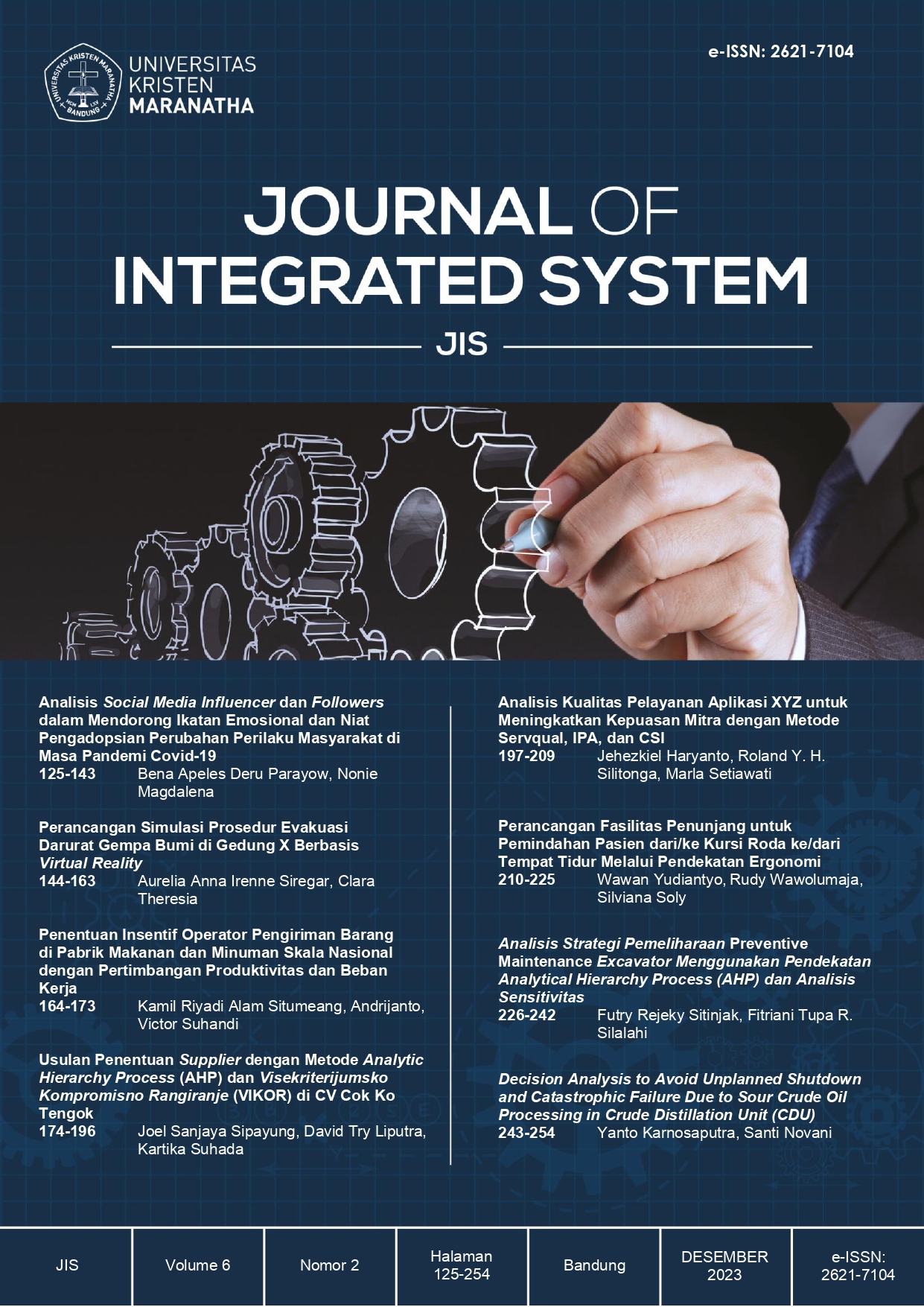Decision Analysis to Avoid Unplanned Shutdown and Catastrophic Failure Due to Sour Crude Oil Processing in Crude Distillation Unit (CDU)
Main Article Content
Abstract
Downloads
Article Details

This work is licensed under a Creative Commons Attribution-NonCommercial 4.0 International License.
By submitting an article with the title above and acceptance publication of the article, I declare that:
- Articles have never been previously published in scientific journals, proceedings or other electronic journals.
- I agree that the article copyright is fully owned by the Journal of Integrated System, Universitas Kristen Maranatha. Declaration of copyright transfer from the author's to the journal is done by completing the following form (Copyright Transfer Agreement).
Journal of Integrated System (JIS) uses a Copyright policy under a Creative Commons Attribution-NonCommercial 4.0 International (CC BY-NC 4.0) license.
References
Belton, V. and Stewart, T. (2002) Multiple criteria decision analysis: an integrated approach. Springer Science & Business Media.
Blanchard, B. (2004) Logistics engineering and management. 6th edn. New Jersey: Pearson Prentice-Hall.
Brunelli, M. (2014) Introduction to the analytic hierarchy process. New York: Springer.
Foster, S.T. (2004) Managing quality: an integrative approach. 2nd edn. Pearson Education International.
Henley, E.J. and Kumamoto, H. (1996) Probabilistic risk assessment and management for engineers and scientists. New York: IEEE Press.
Kasie, F.M. (2013) ‘Combining simple multiple attribute rating technique and analytical hierarchy process for designing multi-criteria performance measurement framework’, The Global Journal of Researches in Engineering: Industrial Engineering, 13(1), pp. 15–30.
Pertamina Energy Institute (2021) Pertamina energy outlook 2021. Jakarta: PT Pertamina (Persero).
Saaty, T.L. (1988) ‘What is the Analytic Hierarchy Process?’, in G. Mitra et al. (eds) Mathematical Models for Decision Support, NATO ASI Series, vol 48. Berlin, Heidelberg: Springer, pp. 109–121.
Saaty, T.L. (2008) ‘Decision Making With The Analytic Hierarchy Process’, International Journal Of Services Sciences, 1(1), pp. 83–98.
Saaty, T.L. and Özdemir, M.S. (2014) ‘How many judges should there be in a group?’, Annals of Data Science, 1, pp. 359–368.
Saaty, T.L. and Vargas, L.G. (2012) ‘The possibility of group choice: pairwise comparisons and merging functions’, Social Choice and Welfare, 38(3), pp. 481–496.
Somonggal, H.O. and Novani, S. (2022) ‘Decision analysis to find the best solution to overcome instrumentation problems by using analytic hierarchy process and SMART method’, Journal of Integrated System, 5(2), pp. 123–142. Available at: https://doi.org/10.28932/jis.v5i2.4710.

